
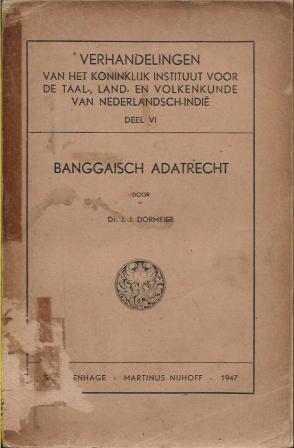

Books in series

De Val van Sora
1939
Over de Gewoonten en Gebruiken der Soendaneezen
1946

Banggaisch Adatrecht
1947

De Kraton van Majapahit
1948

Loetoeng Kasaroeng
Een Mythologisch Verhaal uit West Java
1949

The Wolio Language
Outline of Grammatical Description and Texts
1938

Raffles' Ideas on the Land Rent System in Java and the Mackenzie Land Tenure Commission
1954

Nineteenth-Century Borneo
A Study in Diplomatic Rivalry
1955
The Stone Age of Indonesia
1957

The Bronze-Iron Age of Indonesia
1958

Puncak Kekuasaan Mataram
Politik Ekspansi Sultan Agung
1958
Adat Atjeh
1958
Lombok
Een Dialect-Geografische Studie
1958

The First Contest for Singapore 1819-1824
1959

Disintegrasi Mataram Di Bawah Mangkurat I
1961
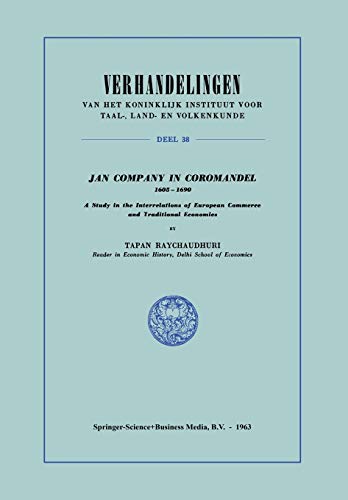
Jan Company in Coromandel 1605-1690
A Study in the Interrelations of European Commerce and Traditional Economies
1961

Runtuhnya Istana Mataram
1962

Syair Perang Mengkasar
1963

The Nimboran Language
Phonology and Morphology
1965

The Merok Feast of the Sa'dan Toradja
1965

The Sa'dan Toradja Chant for the Deceased
1984

The Peasants' Revolt of Banten in 1888
Its Conditions, Course and Sequel: A Case Study of Social Movements in Indonesia
1966
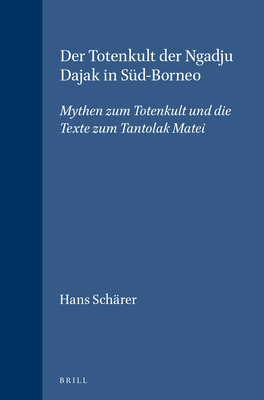
Der Totenkult Der Ngadju Dajak in Süd-Borneo (2 Vols.)
Mythen Zum Totenkult Und Die Texte Zum Tantolak Matei (Verhandelingen Van Het Koninklijk Instituut Voor Taal-, Land)
1966
Francisco Vieira de Figueiredo
Portuguese Merchant-Adventurer in South East Asia, 1624.-1667
1967

[(Music in New Guinea
Three Studies)] [Author: Jaap Kunst] published on
1967

Government in Wanggulam
1958

Pergumulan Islam di Indonesia 1945-1970
1971

The Khilafat movement in India, 1919-1924.
1972
Chairil Anwar
: the poet and his language.
1972

Cultuur als antwoord
1973

Kerajaan Islam Pertama di Jawa
Tinjauan Sejarah Abad XV dan XVI
1974

Islamic states in Java 1500-1700, A Summary, Bibliography and Index
Eight Dutch Books and Articles by H.J. de Graaf
1976
The reconstruction of Proto-Malayo-Javanic
1975

Explorations in the Anthropology of Religion
Essays in Honour of Jan van Baal
1975

Curacao and Guzman Blanco
a case study of small power politics in the Caribbean
1974

De slimme en de domme
Ngadju-Dajakse volksverhalen
1976

Directions for Travellers on the Mystic Path
1977

Mengikuti Jejak Leijdecker jilid 2
(1900-1970) : Satu Setengah Abad Penerjemahan Alkitab dan Penelitian Bahasa-bahasa Nusantara
1978

Nuaulu Settlement and Ecology
An Approach to the Environmental Relations of an Eastern Indonesian Community
1978

Toean Keboen dan Petani
Politik Kolonial dan Perjuangan Agraria
1978

Overleveringen en Zangen der Zuid-Toradja's (Verhandelingen Van Het Koninklijk Instituut Voor Taal-, Land- En Volkenkunde)
1979

Property in Social Continuity
Continuity and Change in the Maintenance of Property Relationships through Time in Minangkabau, West Sumatra
1979

Javanese Literature Since Independence
1979

Bima Swarga in Balinese Wayang
1981

The Heritage of Arung Palakka
A History of South Sulawesi (Celebes) in the Seventeenth Century
1981

Head Hunters about Themselves
An Ethnographic Report from Irian Jaya, Indonesia
1981

Rindi
An Ethnographic Study of a Traditional Domain in Eastern Sumba
1981

Rebellion under the Banner of Islam
The Darul Islam in Indonesia
1981

Symbolic Anthropology in the Netherlands
1982

Sengketa Agraria
Pengusaha Perkebunan Melawan Petani
1982

Migration and Its Alternatives among the Iban of Sarawak
1982

Jan Verschueren’s Description of Yéi-Nan Culture
Extracted From the Posthumous Papers
1982

Penguasaan Tanah dan Tenaga Kerja
Jawa di Masa Kolonial
1983

Unity in Diversity
Indonesia As a Field of Anthropological Study
1984

Early Tenth Century Java from the Inscriptions
A Study of Economic, Social, and Administrative Conditions in the First Quarter of the Century
1984

The Maloh of West Kalimantan
An Ethnographic Study of Social Inequality and Social Change among An Indonesian Borneo People
1985
Overwicht in Overleg (Verhandelingen Van Het Koninklijk Instituut Voor Taal-, Land)
1985

Cultural Contact and Textual Interpretation
1986

The Sa’dan-Toraja
A Study of Their Social Life and Religion
2014

A Men of Indonesian Letters
1986

Taming the Coolie Beast
Plantation Society and the Colonial Order in Southeast Asia
1987

Wörterbuch Der Priestersprache Der Ngaju-Dayak (Verhandelingen Van Het Koninklijk Instituut Voor Taal-, Land)
1987

Wetan Fieldnotes
1987

Madura dalam Empat Zaman
Pedagang, Perkembangan Ekonomi, dan Islam
1988

Penyempurnaan Ejaan
Pembahasan dan Pembaharuan Ejaan di Indonesia dan Malaysia 1900-1972
1988

A Grammar of the Muna Language
1989

Sundanese Music in the Cianjuran Style
Anthropological and Musicological Aspects of Tembang Sunda
1989

Een Haan in Oorlog
1990

The Symbolic System of the Giman of South Halmahera
1989

Nationalists, Soldiers and Separatists
The Ambonese Islands from Colonialism to Revolt, 1880-1950
2008

State and Society in Bali
1991

Excursies in Celebes
1991

Novel Berbahasa Jawa
1992

Sistem Tanam Paksa di Jawa
1992

The Morphology of Wambon of the Irian Jaya Upper Digul Area
With An Introduction to Its Phonology
1992

Women and Mediation in Indonesia
1992

Seni Tari Jawa
Tradisi Surakarta dan Peristilahannya
1995

Gentle Janus, Merchant Prince
The VOC and the Tightrope of Diplomacy in the Malay World, 1740-1800
1993

Perang Cina dan Runtuhnya Negara Jawa 1725-1743
1994

Kraton and Kumpeni
1995

Ancient Indonesian Sculpture
1994
Nationalism And Regionalism In A Colonial Context
Minahasa In The Dutch East Indies
1996

Desawarnana
Nagarakrtagama
1365

The Spell Of Power
A History Of Balinese Politics
2006

Japan, Indonesia and the War
Myths and Realities
1997

In the Shadow of Migration
Rural Women and Their Households in North Tapanuli Indonesia
1997

Cultural Dynamics of Religious Change in Oceania
1997

Beneath the Volcano
Religion, Cosmology and Spirit Classification Among the Nage of Eastern Indonesia
1998

Kayan Religion
Ritual Life and Religious Reform in Central Borneo
1998

Beyond the Realm of Senses
The Balinese Ritual of Kekawin Composition
2000

A Quest for Justice
The Millenary Aspirations of a Contemporary Javanese Wali
2000
A demographic history of the Indonesian archipelago, 1880-1942
1999

Dependence on Green Gold
A Socio Economic History of the Indonesian Coconut Island Selayar
1999

Grandchildren of the Ga'e Ancestors
Social Organization and Cosmology among the Hoga Sara of Flores
2000

A Country in Despair
Indonesia Between 1997 and 2000
2001

Jakarta Batavia
Esai Sosio Kultural
2001

Kuasa dan Usaha di Masyarakat Sulawesi Selatan
2000

Forests of Fortune?
The Environmental History of Southeast Borneo, 1600-1880
2001

Extremes in the Archipelago
Trade and Economic Development in the Outer Islands of Indonesia, 1900-1942
2001

The Leiden Legacy
Concepts of Law in Indonesia
2004

Masa Cerah dan Masa Suram di Pedesaan Jawa
2002

Minorities, Modernity and the Emerging Nation
Christians in Indonesia, a Biographical Approach
2003

Muddied Waters
Historical and Contemporary Perspectives on Management of Forests and Fisheries in Island Southeast Asia
2006

Fertility, Food and Fever
Population, Economy and Environment in North and Central Sulawesi, 1600-1930
2003

Clearing a Space
Postcolonial Readings of Modern Indonesian Literature
2002

Two is Enough
Family Planning in Indonesia under the New Order 1968 1998
2003

The Indonesian Revolution and the Singapore Connection, 1945-1949
2003

Framing Indonesian Realities
Essays in Symbolic Anthropology in Honour of Reimar Schefold
2003

Multiple Centres of Authority
Society and Environment in Siak and Eastern Sumatra, 1674-1827
2003

Leti, a Language of Southwest Maluku
2004

Kruidnagelen en christenen
de VOC en de bevolking van Ambon, 1656-1696
2004

Identity and Development
Tongan Culture, Agriculture, and the Perenniality of the Gift
2004

Journeys of Desire
A Study of the Balinese Text Malat
2005

Smallholders and Stockbreeders
Histories of Foodcrop and Livestock Farming in Southeast Asia
2004

One Head, Many Faces
New Perspectives on the Bird's Head Peninsula of New Guinea
2004

Constituting Unity and Difference
Vernacular Architecture in a Minangkabau Village
2004

Juggling Money
Financial Self-Help Organizations and Social Security in Yogyakarta
2005

Monsoon Traders
Ships, Skippers And Commodities in Eighteenth-century Makassar
2004

Print, Poetics, and Politics
A Sumatran Epic in the Colonial Indies and New Order Indonesia
2005

king-of-the-waters-homan-van-der-heide-and-the-origin-of-modern-irrigation-in-siam
2005

Shifting Images of Identity in the Pacific
2004

The Lion and the Gadfly
Dutch Colonialism and the Spirit of E.F.E. Douwes Dekker
2007

Kuasa Berkat dari Belantara dan Langit
Struktur Transformasi Agama Orang Toraja di Mamasa, Sulawesi Barat
2006

Histories of the Borneo Environment
Economic, Political and Social Dimensions of Change and Continuity
2005

A Life-Long Passion
P.J. Veth (1814-1895) and the Dutch East Indies
2006

The Voice of the Law in Transition
Indonesian Jurists and Their Languages, 1915-2000
2008

Listening to an Earlier Java
Aesthetics, Gender, and the Music of Wayang in Central Java
2007

Renegotiating Boundaries
Local Politics in post-Soeharto Indonesia
2007

A World of Water
Rain, Rivers and Seas in Southeast Asian Histories
2007

Restoring the Balance
Performing Healing in West Papua
2008
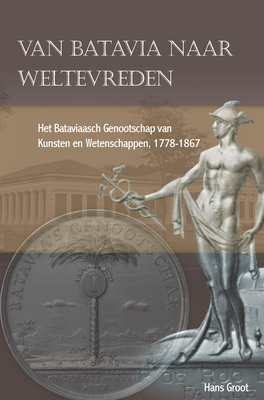
Van Batavia Naar Weltevreden
Het Bataviaasch Genootschap Van Kunsten En Wetenschappen, 1778-1867 (Verhandelingen Van Het Koninklijk Instituut Voor Taal-, Land)
2009

Beyond Empire And Nation
Decolonizing Societies In Africa And Asia, 1930s-1970s
2013

Bridges to New Business
The Economic Decolonization of Indonesia
2008

Under Construction
The Politics of Urban Space and Housing during the Decolonization of Indonesia, 1930 1960
2010

The Ramayaṇa in the Literature and Visual Arts of Indonesia
2011

Srikandhi Dances Lènggèr
A Performance of Music and Shadow Theater in Central Java
2009

Verguisd en vergeten
Tan Malaka, de linkse beweging en de Indonesische Revolutie, 1945-1949 [3 volumes]
2007

Jaranan
The Horse Dance and Trance in East Java
2008

The Netherlands Indies and the Great War, 1914-1918
2007

Lost in Mall
An Ethnography of Middle-Class Jakarta in the 1990s
2011

Linking Destinies
Trade, Towns and Kin in Asian History
2008

The Stranger Kings of Sikka
2008

Gender, Ritual And Social Formation In West Papua
A Configurational Analysis Comparing Kamoro And Asmat
2010

Environmental Dispute Resolution in Indonesia
2010

Uma Politics
An Ethnography of Democratization in West Sumba, Indonesia, 1986-2006
2008

The Lands West of the Lakes
A History of the Ajattappareng Kingdoms of South Sulawesi, 1200 to 1600 CE
2009

De garoeda en de ooievaar
Indonesië van kolonie tot nationale staat
2010

Indonesian Economic Decolonization in Indonesia in Regional and International Perspective
2009

Memetakan Masa Lalu Aceh
2011

The State and Illegality in Indonesia
2011

Images of the Tropics
Environment and Visual Culture in Colonial Indonesia
2011

Cleanliness and Culture
Indonesian Histories
2011

Heirs to World Culture
Being Indonesian, 1950-1965
2011

Healers on the Colonial Market
Native Doctors and Midwives in the Dutch East Indies
2009

Contemporary Indonesian Film
Spirits of Reform and Ghosts from the Past
2012

Dairi Stories and Pakpak Storytelling
2012

Following the Cap-Figure in Majapahit Temple Reliefs
A New Look at the Religious Function of East Javanese Temples, Fourteenth and Fifteenth Centurie
2012

Musical Worlds in Yogyakarta
2012

Islam and the Making of the Nation
Kartosuwiryo and Political Islam in Twentieth-Century Indonesia
2012

Nuaulu Religious Practices
The Frequency and Reproduction of Rituals in Moluccan Society
2012

Making a Living between Crises and Ceremonies in Tana Toraja
2013

Few Poorly Organized Men
Interreligious Violence in Poso, Indonesia
2012

Commodities and Colonialism
The Story of Big Sugar in Indonesia, 1880-1942
2013

Culture, Power, and Authoritarianism in the Indonesian State
Cultural Policy Across the Twentieth Century to the Reform Era
2013

Recollecting Resonances
Indonesian-Dutch Musical Encounters
2013

Sonic Modernities in the Malay World
A History of Popular Music, Social Distinction and Novel Lifestyles
2013

In Search of Middle Indonesia
Kelas Menengah di Kota-Kota Menengah
2014

The Making of Middle Indonesia
Middle Classes in Kupang Town, 1930s–1980s
2014

Religion and Architecture in Premodern Indonesia
Studies in Spatial Anthropology
2014

Cars, Conduits, and Kampongs
The Modernization of the Indonesian City, 1920-1960
2014

Forgotten People
Poverty, Risk and Social Security in Indonesia: The Case of the Madurese
2014

Performing Contemporary Indonesia
Celebrating Identity, Constructing Community
2015

Martial Arts and the Body Politic in Indonesia
2015
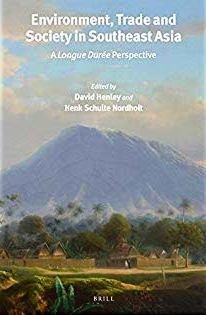
Environment, Trade and Society in Southeast Asia
A Longue Durée Perspective
2015
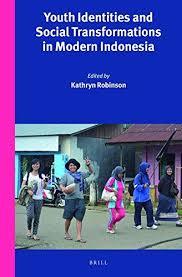
Youth Identities and Social Transformations in Modern Indonesia
2015
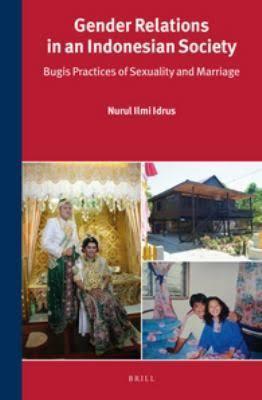
Gender Relations in an Indonesian Society
Bugis Practices of Sexuality and Marriage
2016

Storytelling in Bali
2016
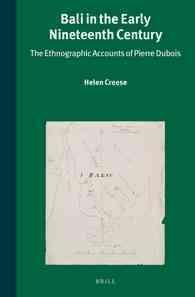
Bali in the Early Nineteenth Century
The Ethnographic Accounts of Pierre Dubois (Verhandelingen Van Het Koninklijk Instituut Voor Taal-, Land- En Volkenkunde, 305)
2016
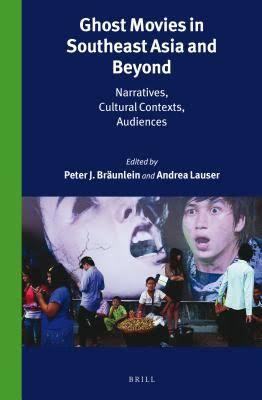
Ghost Movies in Southeast Asia and Beyond
Narratives, Cultural Contexts, Audiences (Southeast Asia Mediated)
2016

Indonesia's Overseas Labour Migration Programme, 1969-2010
2016
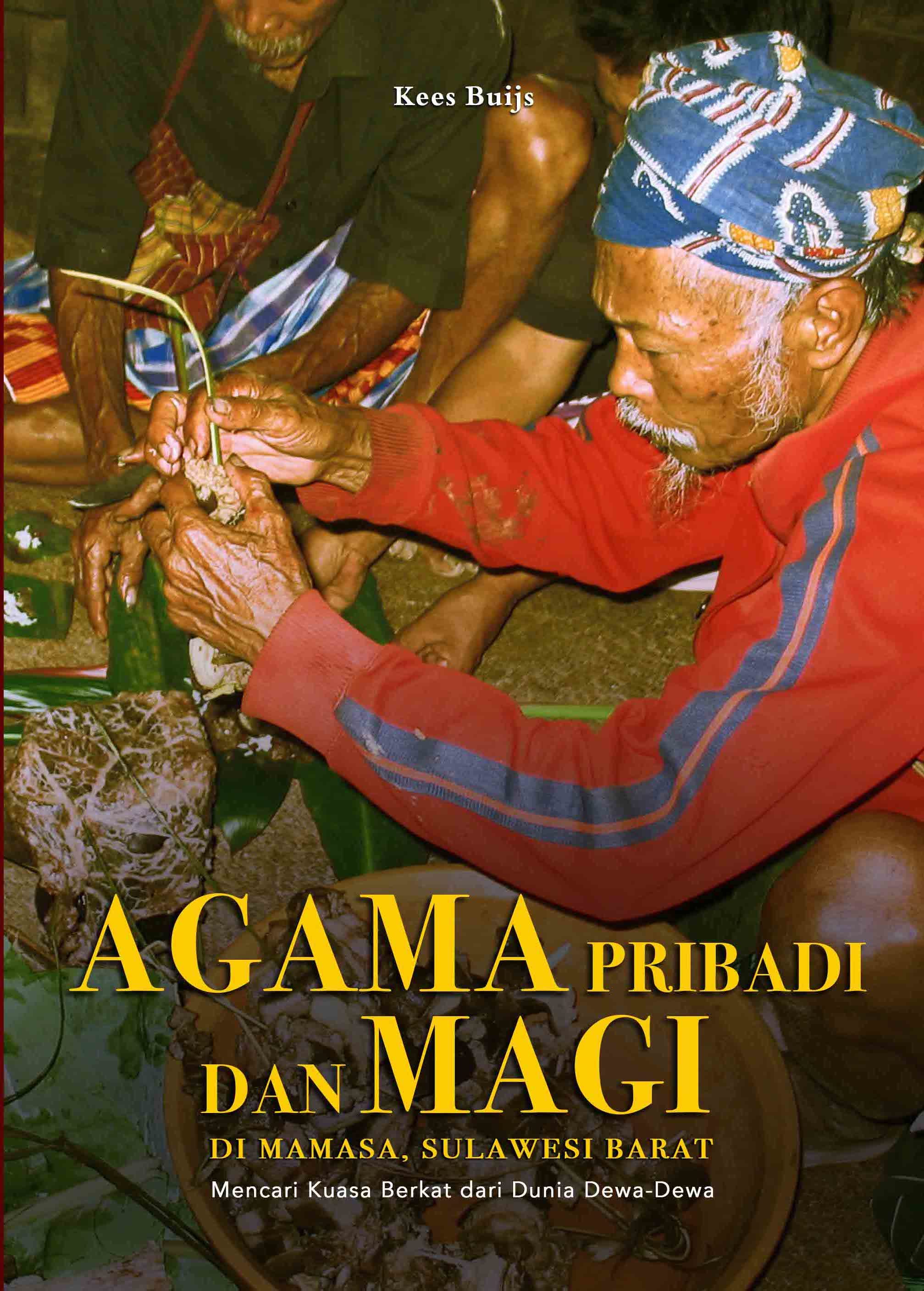
Agama Pribadi dan Magi di Mamasa, Sulawesi Barat
2016

Christianity, Colonization, and Gender Relations in North Sumatra
A Patrilineal Society in Flux
2017
Conflict, Identity, and State Formation in East Timor 2000 - 2017
2019

Authoritarian Modernization in Indonesia's Early Independence Period
2020
Authors


Gunawan Wiradi adalah anak bangsa yang konsisten dalam perjuangan reforma agraria. Beliau lahir pada 28 Agustus 1932 di Solo, Jawa Tengah. Putra bungsu dari pasangan R.Pujo Sastrosupodo dan R.A Sumirah ini lulus dari sekolah Arjuna (sekarang sekolah dasar/SD) pada 1946. Pada 1953 Pak GWR sapaan akrab beliau melanjutkan kuliah di IPB. Sambil bekerja beliau akhirnya menamatkan kuliahnya dan menjadi dosen di IPB tahun 1963. Saat ini, beliau terus aktif dalam dunia penelitian dan penulisan, sebagai dewan pakar di KPA dan Sajogyo Institut.


Gerry van Klinken is an honorary research fellow at KITLV, where he worked as a senior researcher until 2018, and at the University of Queensland in Brisbane, Australia. Gerry became professor by special appointment of Southeast Asian Social and Economic History at the University of Amsterdam in 2013, and emeritus upon his retirement in 2018. Gerry’s current research is moving towards the comparative history and politics of climate change adaptation in Asia (Indonesia, Japan, the Philippines and India). He coordinated international research projects on the provincial middle class in Indonesia (In Search of Middle Indonesia, 2006-2011), on citizenship and democratisation in Indonesia (From Clients to Citizens? 2012-2016), and on digital humanities (Elite Network Shifts, 2012-2016). After gaining a MSc in geophysics (Macquarie University, Sydney, 1978), Van Klinken taught physics in universities in Malaysia and Indonesia (1979-91). Thereafter he moved into Asian Studies and earned a PhD in Indonesian history from Griffith University in Brisbane in 1996. After that he taught and researched in this field at universities in Brisbane, Sydney, Canberra, Yogyakarta (Indonesia), and now Leiden and Amsterdam. In 1998 he became a frequent media commentator on Indonesian current affairs in Australia. He was editor of the Australian quarterly magazine Inside Indonesia between 1996 and 2002 and remains on the editorial board. From late 1999 to 2002 he was resident director in Yogyakarta for the Australian Consortium of In-Country Indonesian Studies (Acicis). In 2002-2004 he also spent nine months as research advisor to the Commission for Reception, Truth and Reconciliation in East Timor (CAVR).
Elisabeth Margaretha (Lizzy) van Leeuwen is een Nederlands bestuurskundige, cultureel antropoloog en publicist. Ze schrijft onder andere voor De Groene Amsterdammer. Van Leeuwen, zelf Indisch, is deskundig op het gebied van de positie van Indische Nederlanders in het postkoloniale tijdperk. Tot 2008 was ze werkzaam bij het Meertens Instituut waar ze met de historicus Gert Oostindie het project "Bringing history home" als postdoc historisch en etnologisch onderzoeker werkte. Ze deed onderzoek naar de wisselwerking tussen de naoorlogse identiteitspolitiek onder postkoloniale migranten in Nederland en de Nederlandse samenleving. Bij de Tweede Kamerverkiezingen van 2021 stond ze op de 8ste plek van de kieslijst van Splinter.

Tapan Raychaudhuri (8 May 1926– 26 November 2014) was an Indian historian specialising in British Indian history, Indian economic history and the History of Bengal. He was a student of Ballygunge Government High School, Calcutta and Barisal Zilla School, Scottish Church College, Calcutta, where he completed his I.A. and finally Presidency College, Calcutta, where he completed his B.A. (Hons.) in history with a high first class. He completed his first D.Phil. in history at Calcutta University under the supervision of Sir Jadunath Sarkar and his second D.Phil. at Balliol College, Oxford under the supervision of Dr. C.C. Davies. He started his career as a lecturer at the Department of Islamic History and Culture, Calcutta University. After his return from Britain he became a deputy director of the National Archives of India. He was a reader and then professor of history and director of the Delhi School of Economics and also of the department of history of Delhi University. He was first a reader in Modern South Asian History and then professor of Indian History and Civilization and fellow of St. Antony's College, Oxford from 1973-93. He was an emeritus fellow of St. Antony's College, Oxford after retirement. He became a national research professor in India in 2010 Awards:
- Watumull Prize awarded by the American Historical Association, 1982. (jointly with Irfan Habib) for the Cambridge Economic History of India.
- Doctor of Letters 1993, University of Oxford.
- Doctor of Letters honoris causa by the University of Calcutta.
- Doctor of Letters honoris causa by the University of Burdwan.
- Padma Bhushan in 2007 in recognition to his contributions to history.

Harry A. Poeze is a senior researcher at KITLV working on the Project ‘Dutch Military Operations in Indonesia 1945-1950’ in a general supervisory and advisory capacity, contributing his expertise on developments in Indonesian politics and the Indonesian armed forces. Harry studied Political Science at the University of Amsterdam, where he graduated in 1972. In 1976 he obtained his PhD in Social Sciences at the University of Amsterdam with a thesis on the biography of the Indonesian political leader Tan Malaka. At that time Harry was an alderman in the local government of Castricum. Later he became head of the KITLV Publications Department (1981), which has since developed into the KITLV Press. Since 2010 he was senior publisher with the Press, and now, in retirement, a senior researcher at KITLV. His research interest is in the developments in the Indonesian political world since 1900, during Dutch colonial rule, the Japanese occupation, and the Indonesian Revolution in particular. He published a three-volume history of the Indonesian Left during the Indonesian Revolution, concentrating on the role of Tan Malaka, in 2007. Currently he is working on a publication about Indonesian political songs (1925-1965), the (revised) biography of Tan Malaka till 1945, and a monograph on Boven-Digoel, the Dutch colonial internment camp for political prisoners.
Librarian Note: There is more than one author in the GoodReads database with this name. See this thread for more information. Cornelis (Kees) van Dijk (1946) is emeritus professor of the history of modern Islam in Indonesia at Leiden University and head of the former Documentation Modern Indonesia (DMI) department of the Royal Netherlands Institute of Southeast Asian and Caribbean Studies (KITLV).

Dr Keith Foulcher PhD retired in February 2006 as lecturer and coordinator of the Indonesian Studies program. Before his appointment to the University of Sydney in 1996, he taught at Monash University in Melbourne and Flinders University in Adelaide. He has an international reputation for his work on modern Indonesian literature, and has been an invited speaker at various universities and associations in Indonesia, Singapore, The Netherlands and the United States. His writings: * "On Being a Modern Writer: Translation and the Angkatan 45" in Henri Chambert-Loir (ed.), Translation in Indonesia (EFEO, Paris) * "Moving Pictures: Western Marxism and Vernacular Literature in Colonial Indonesia" in Doris Jedamski (ed), Chewing Over the West (Rodopi, London) * Social Commitment in Literature and the Arts: The Indonesian "Institute of People's Culture," 1950-1965 (Monash University: Centre of Southeast Asian Studies, 1986) 234 pp. * "The Construction of an Indonesian National Culture: Patterns of Hegemony and Resistance" in Arief Budiman (ed.) State and Civil Society in Indonesia (Monash University: Centre of Southeast Asian Studies, 1990) pp. 301-320. * Pujangga Baru: Kesusastraaan dan Nasionalisme di Indonesia 1933-1942 (Jakarta: Girimukti Pasaka, 1991) 137 pp. * "Literature, Cultural Politics and the Indonesian Revolution" in D.M.Roskies (ed.) Text/Politics in Island Southeat Asia (Ohio University: Center for International Studies, 1992) pp. 221-256. * “Sumpah Pemuda: The Making and Meaning of a Symbol of Indonesian Nationhood”, Asian Studies Review (Australia) 24/3, September 2000, pp.377-410.) * (with Tony Day, joint editor), Clearing a space: Postcolonial readings of modern Indonesian Literature (Leiden: KITLV Press, 2002) * “Community and the metropolis: A Lenong Performance in Early New Order Jakarta”, Review of Indonesian & Malaysian Affairs (RIMA) 37/2, 2003, pp. 27-66 * “Biography, History and the Indonesian Novel: Reading Salah Asuhan”, Bijdragen tot de Taal-, Land- en volkenkunde (Leiden), 161/2-3, 2005, pp. 247-268.
Dr. Paul Willem Johan van der Veur was Professor Emeritus of political science at Ohio University. Born to Dutch parents in the Netherlands East Indies (now Indonesia), he attended school in Surabaya, Java, where his father practiced as a physician (he also briefly attended a lycée in Hilversum, in the Netherlands). He fought against the Japanese in World War II, was captured and spent part of his imprisonment in the infamous Changi prison in Singapore. After the war, having obtained a scholarship to attend Swarthmore College (Swarthmore, Pennsylvania), he moved to the U.S.A. He later earned a master’s degree from the University of Minnesota, and received his Ph.D. in political science from Cornell University in 1955. He taught at Yale University, the University of Hawaii, the Australian National University and Northern Illinois University. In 1967, Professor van der Veur became the founding director of the Southeast Asia Program at Ohio University. He retired from the classroom in 1991, but remained active as a scholar to the end of his life.

Tan Malaka (1894 - February 21, 1949) was an Indonesian nationalist activist and communist leader. A staunch critic of both the colonial Dutch East Indies government and the republican Sukarno administration that governed the country after the Indonesian National Revolution, he was also frequently in conflict with the leadership of the Communist Party of Indonesia (PKI), Indonesia's primary radical political party in the 1920s and again in the 1940s. A political outsider for most of his life, Tan Malaka spent a large part of his life in exile from Indonesia, and was constantly threatened with arrest by the Dutch authorities and their allies. Despite this apparent marginalization, however, he played a key intellectual role in linking the international communist movement to Southeast Asia's anti-colonial movements. He was declared a "hero of the national revolution" by act of Indonesia's parliament in 1963.


